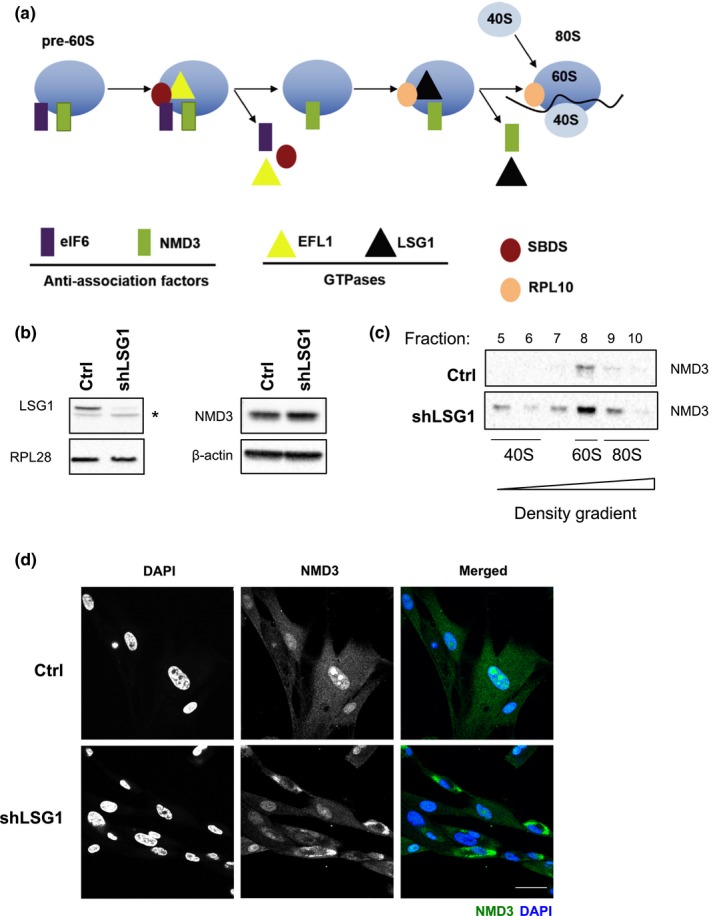Figure 1.

Knockdown of LSG1 inhibits NMD3 release from the ribosomal 60S subunit. (a) Schematic of the late cytoplasmic reactions of 60S subunit maturation. The cytoplasmic pre‐60S subunit carries the anti‐association factors eIF6 and NMD3. Recruitment of the factor SBDS and the GTPase EFL1 leads to eviction of eIF6 in a reaction catalysed by hydrolysis of GTP. SBDS stimulates GTP hydrolysis by EFL1, which induces a rotation in the structure of SBDS, resulting in conformational changes and eIF6 release. RPL10 and the GTPase LSG1 then bind to the subunit leading to eviction of NMD3, again catalysed by GTP hydrolysis. RPL10 is retained on the 60S subunit, and the mature 80S ribosome is formed. (Adapted from Finch et al., 2011 and Hedges et al., 2005) (b) Western blot analysis shows the knockdown of LSG1 in HEK 293 cells. The asterisk denotes a nonspecific band. RPL28 was used as a reference protein. A blot for NMD3 in IMR90 cells with β‐actin as control is also shown. (c) Western blot analysis shows the levels of NMD3 and RPS14 across sequential fractions (5–10) collected from sucrose gradients in control and shLSG1 conditions. Extracts were normalized by spectrophotometry at 254 nm prior to loading. The NMD3 in fraction 8 corresponds to the localization of 60S monomers. (d) Immunostaining for NMD3 in MRC5 cells (control and shLSG1), followed by confocal microscopy, reveals relocalization of NMD3 to the cytoplasm following LSG1 knockdown. Scale bar: 50 μm
